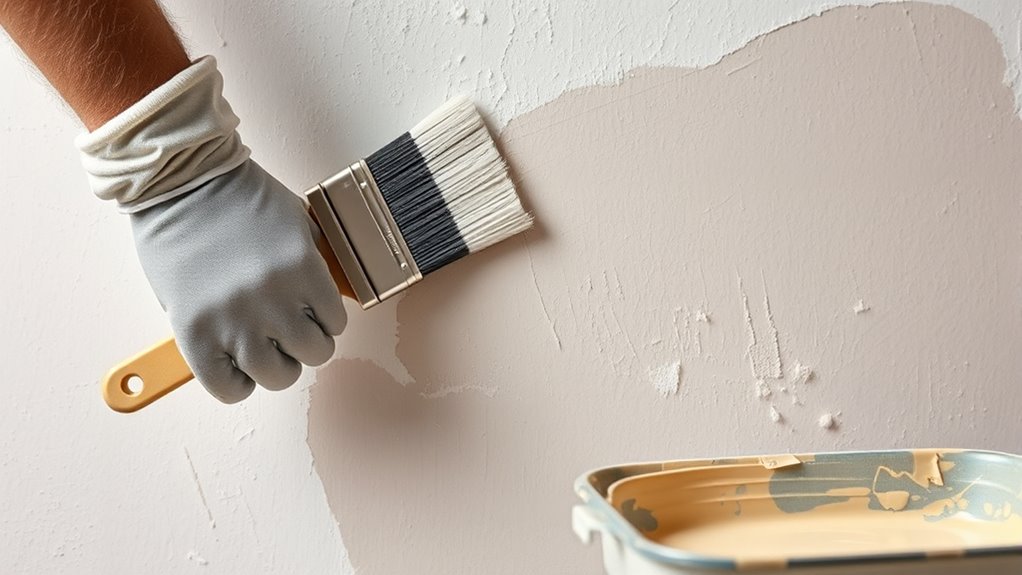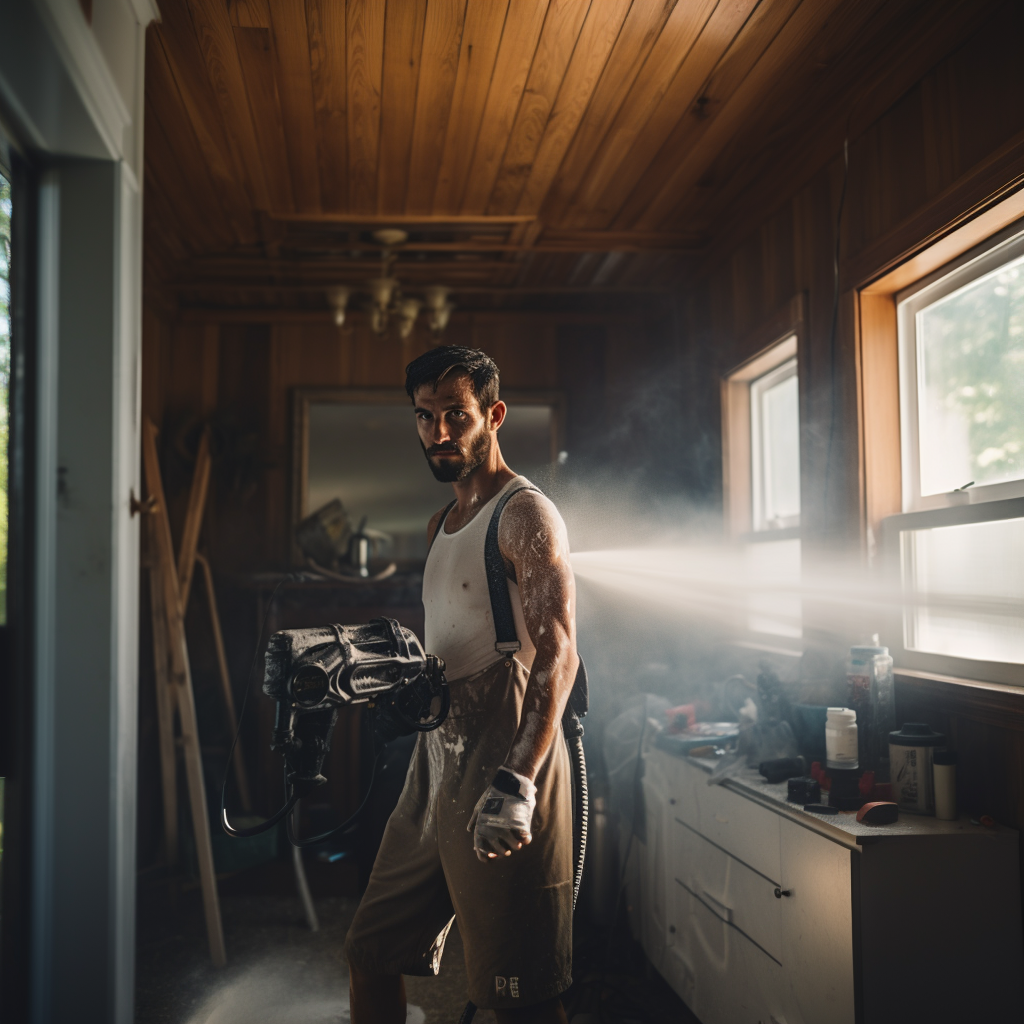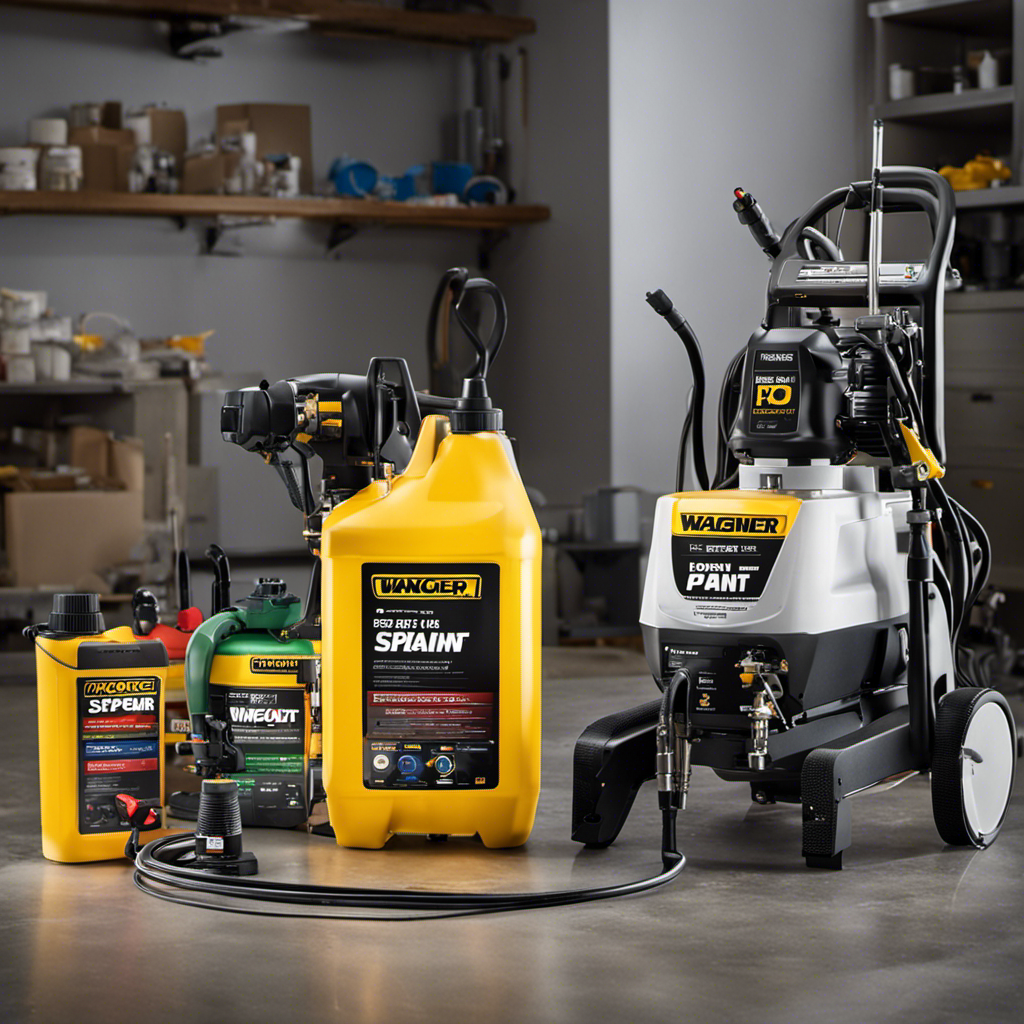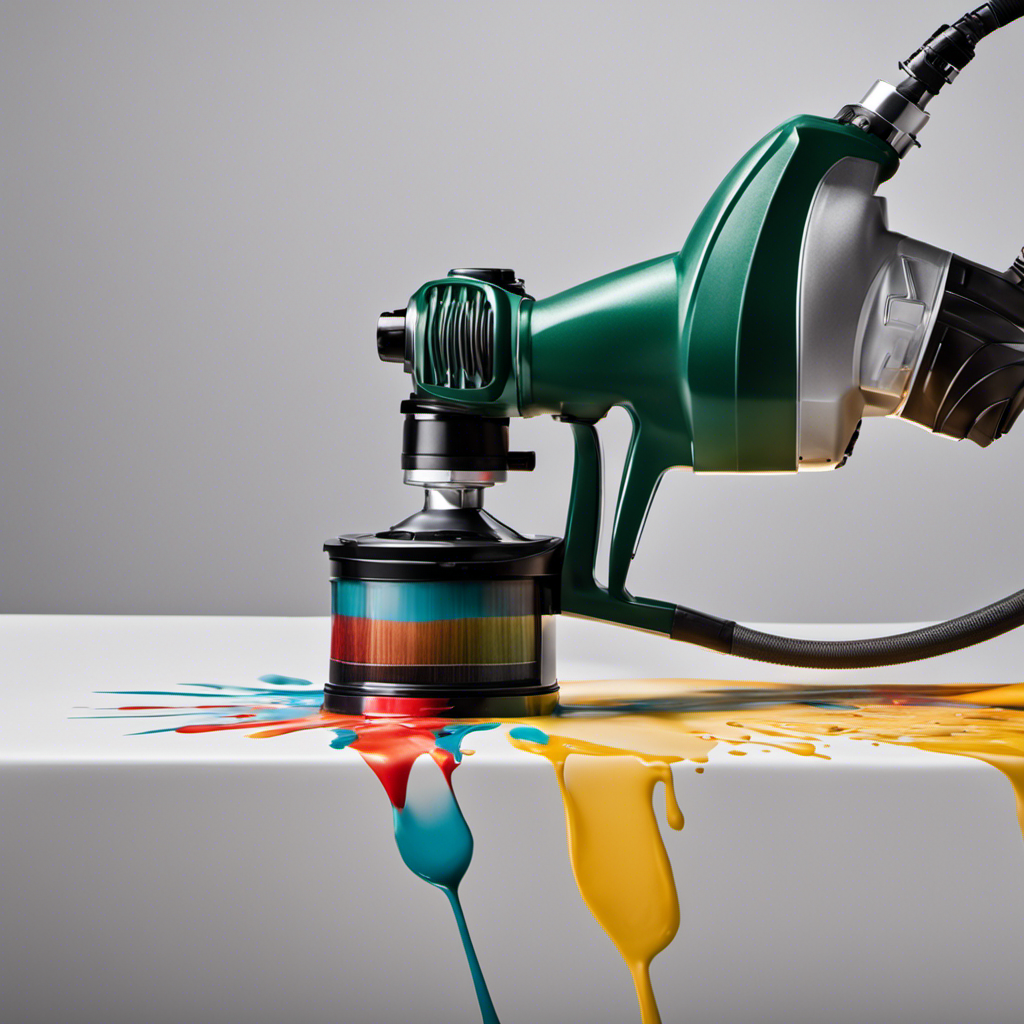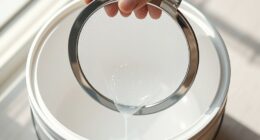To fix uneven or patchy coverage, start by inspecting your surface for debris, dirt, or moisture, and prepare it properly. Use the right brush and apply paint with smooth, even strokes, maintaining consistent pressure. Make sure your paint has the right consistency—neither too thick nor too thin—to avoid streaks or thin spots. If issues persist, adjusting your technique and paint viscosity can drastically improve your finish. Keep going to discover more tips for achieving a flawless look.
Key Takeaways
- Identify signs of patchiness like streaks or thin spots to target specific application issues.
- Use the appropriate brush and apply paint with smooth, consistent strokes to ensure even coverage.
- Check and adjust paint consistency by stirring thoroughly and thinning if necessary for better flow.
- Test paint on scrap surfaces to determine proper viscosity before applying to the main surface.
- Maintain proper application techniques, including correct brush loading and blending, to prevent uneven or patchy finishes.

A poor finish can ruin an otherwise perfect project, but identifying the root cause is often straightforward if you know what to look for. When you notice uneven or patchy coverage, it’s vital to consider your brush techniques and paint consistency, as these are common culprits. Your approach to applying the paint directly impacts how smoothly and evenly it spreads across the surface. If you’re using a brush that’s too stiff or too soft, or if you’re not loading it properly, you might leave streaks or thin spots. To achieve a flawless finish, make sure you’re using the right brush for your paint type and that you’re loading it correctly—dipping just enough to cover the bristles without overloading. Use smooth, even strokes, maintaining a consistent pressure to avoid creating thin or thick areas. Proper brush techniques involve blending each stroke into the previous one before it dries, which helps prevent visible lines or patches.
Paint consistency is equally vital. If your paint is too thick, it can leave brush marks and uneven textures, while paint that’s too runny might drip or fail to cover properly. To troubleshoot this, stir the paint thoroughly and consider thinning it slightly with the manufacturer’s recommended solvent if it’s too thick. Conversely, if it’s too thin, you might need to add a little more paint or avoid diluting it further. Achieving the right paint consistency involves testing on a scrap surface before starting your project. When you apply paint with the proper consistency, it spreads evenly and flows smoothly, reducing the chances of patchiness. Remember that different surfaces and paints require different viscosities, so don’t assume a one-size-fits-all approach. Additionally, understanding paint application techniques can help you optimize your coverage and avoid uneven results.
Frequently Asked Questions
How Can I Prevent Uneven Coverage Before Starting?
Before you start, guarantee you’re prepared to prevent uneven coverage. Begin with proper primer application to create a smooth, uniform surface. Check your paint consistency—add a little water or thinning agent if it’s too thick, or stir thoroughly if it’s too gloopy. Applying paint in even, consistent coats and using quality tools also helps. These steps set the foundation for a flawless finish and reduce the risk of patchiness.
What Tools Are Best for Achieving a Smooth Finish?
Ah, the noble quest for a flawless finish—surely only the gods can master it? Luckily, you don’t need divine intervention. Use high-quality brushes and master your brush techniques for precision. For larger areas, select a roller that suits your surface—smooth or textured. A good roller and skillful brushwork are your best allies, turning a patchy mess into a smooth, professional-looking masterpiece.
How Do Temperature and Humidity Affect Coverage Quality?
You should consider how paint temperature and humidity effects impact your coverage quality. If the paint is too cold or too hot, it may not adhere properly, leading to uneven or patchy coverage. High humidity can slow drying times, causing streaks or a poor finish. To get the best results, work in a controlled environment with ideal temperature and humidity levels, ensuring your paint cures evenly and smoothly.
Can I Fix Patchy Paint Without Repainting Entirely?
Imagine you’ve painted a wall and notice patchy areas. You can often fix this without repainting entirely by blending the uneven spots. Use proper color mixing to match the existing paint, then employ smooth brush techniques to feather the edges. Lightly reapply paint to the patchy sections, blending carefully to create a seamless finish. This approach saves time and maintains a professional look without starting over.
What Are Common Mistakes That Cause Uneven Coverage?
You might cause uneven coverage if you don’t pay attention to brush strokes or if your paint consistency isn’t right. Using a brush with too much paint can lead to drips and streaks, while too little paint results in patchy spots. Additionally, rushing or not layering properly can leave your finish uneven. Make sure to use smooth, even brush strokes and maintain a consistent paint texture for the best results.
Conclusion
If you think uneven coverage is just bad luck, think again. Sometimes, it’s a sign you’re missing a vital step, like proper surface prep or mixing techniques. Actually, studies show that even tiny inconsistencies in application can lead to patchy finishes. So, next time your project’s uneven, remember—troubleshooting isn’t just guesswork. It’s about understanding the process. By investigating your methods, you’ll uncover the real reason behind the poor finish and finally achieve that smooth, professional look you want.
Franz came aboard the Paint Sprayer Zone team with a background in both journalism and home renovation. His articulate writing style, combined with a passion for DIY projects, makes him an invaluable asset. Franz has a knack for breaking down technical jargon into easy-to-understand content, ensuring that even the most novice of readers can grasp the complexities of paint sprayers.
